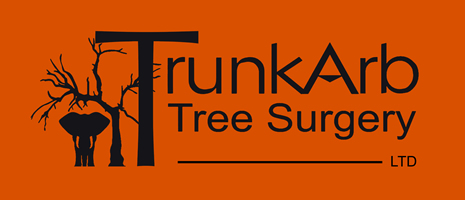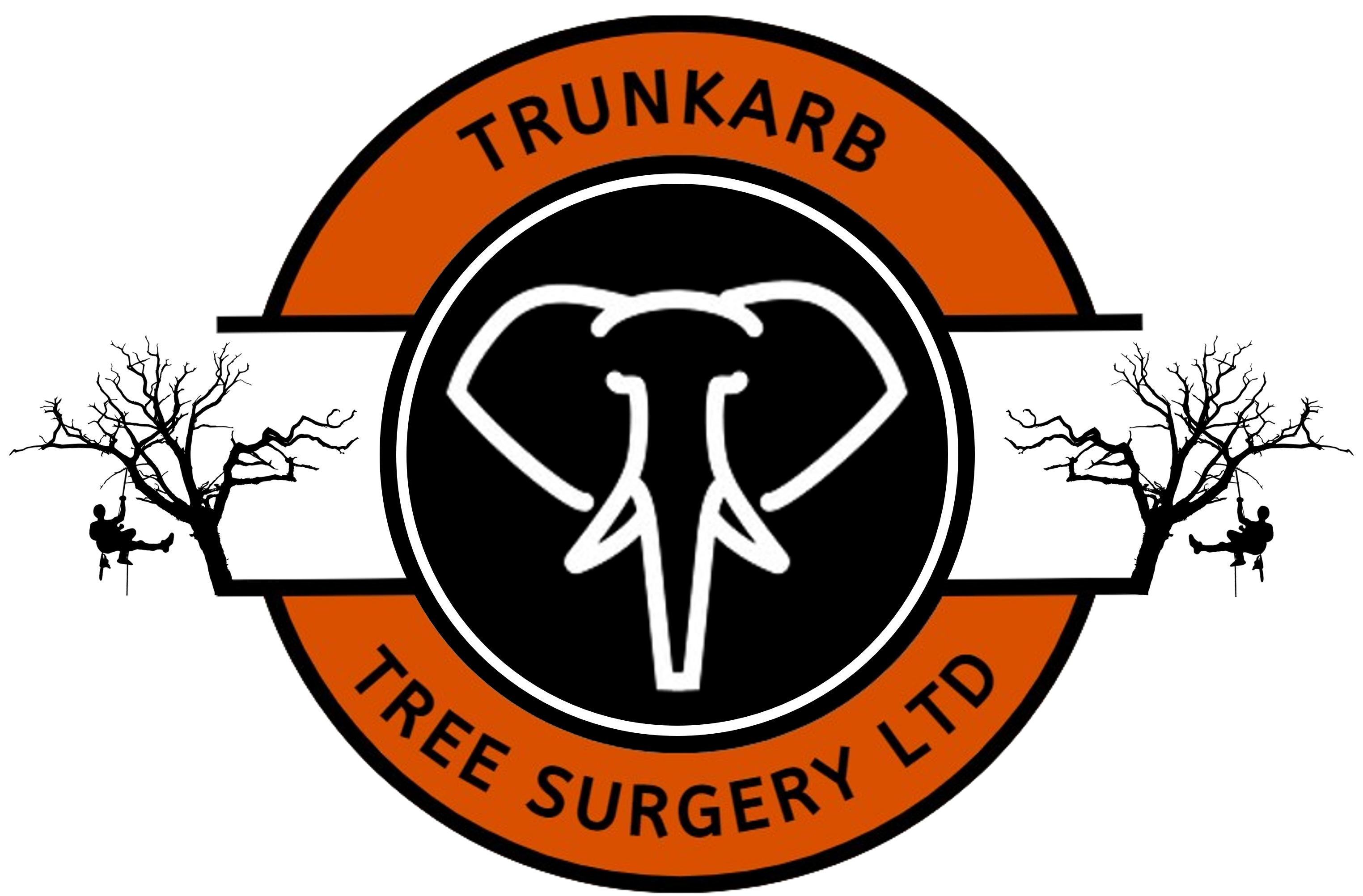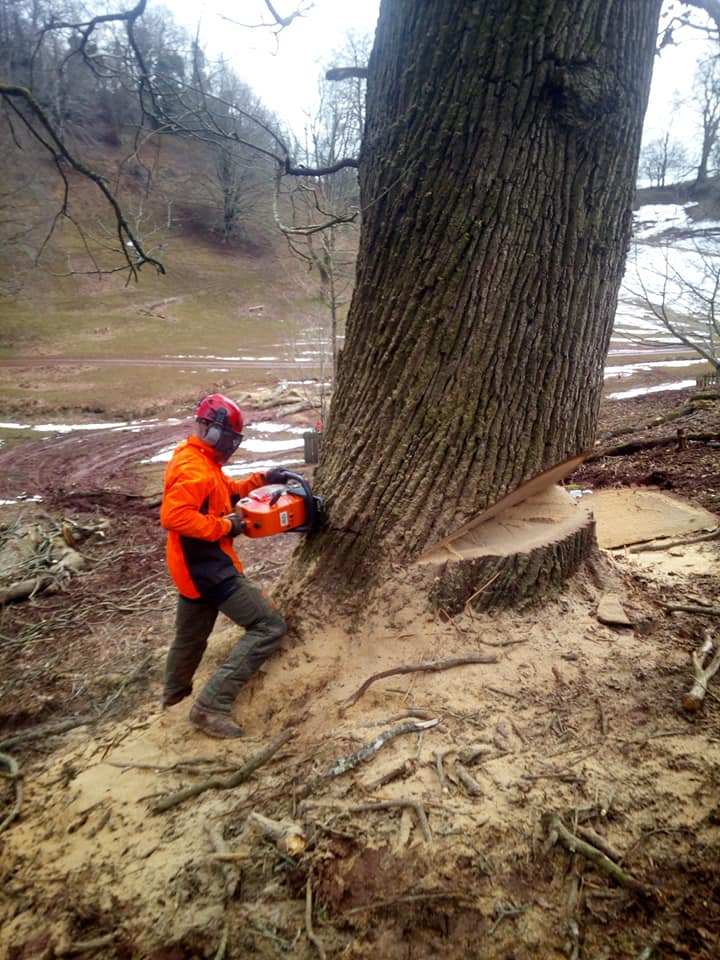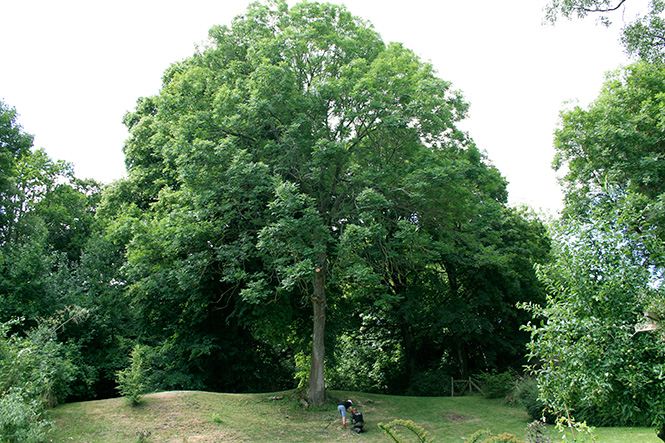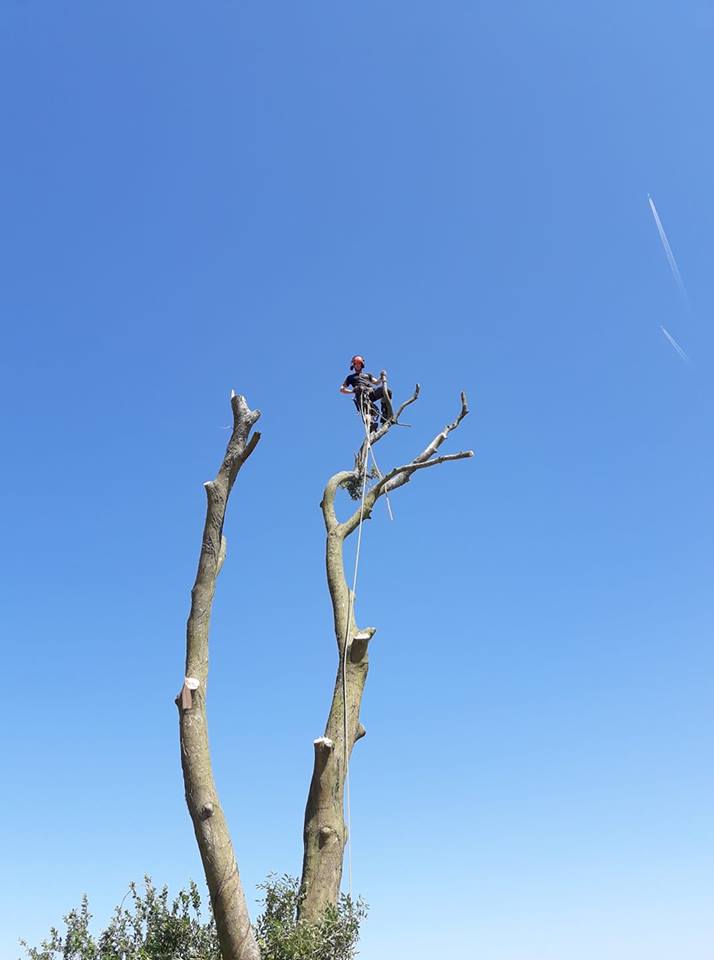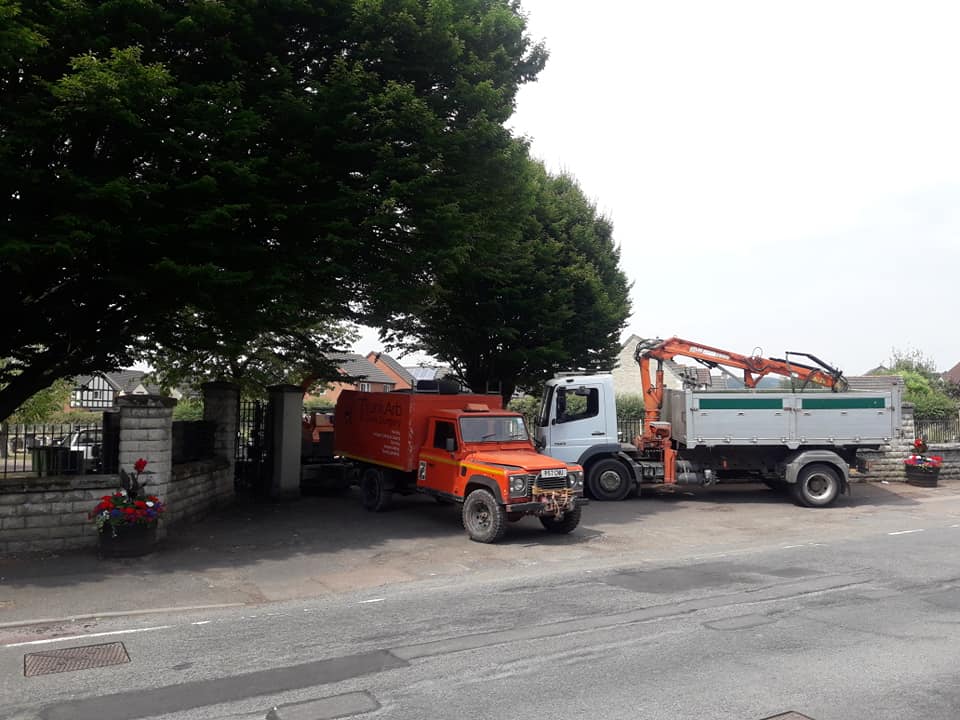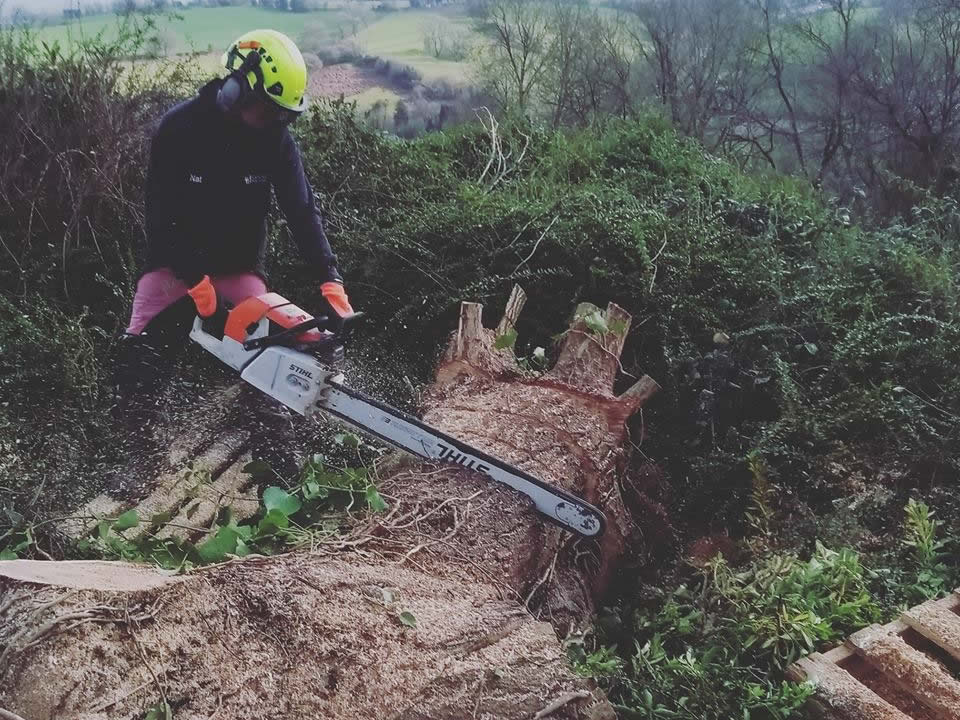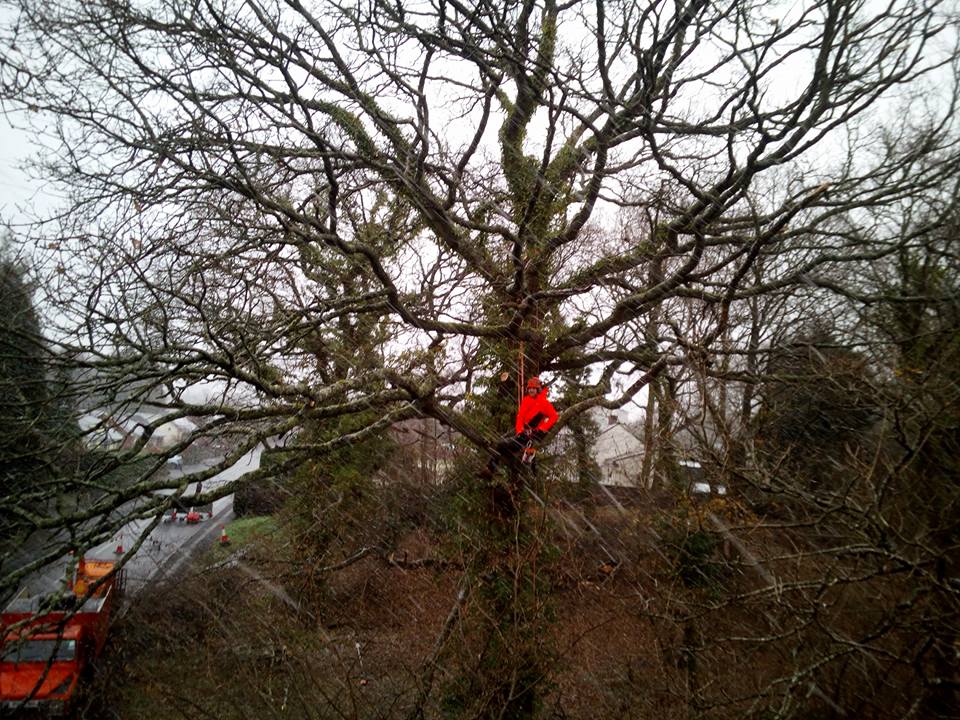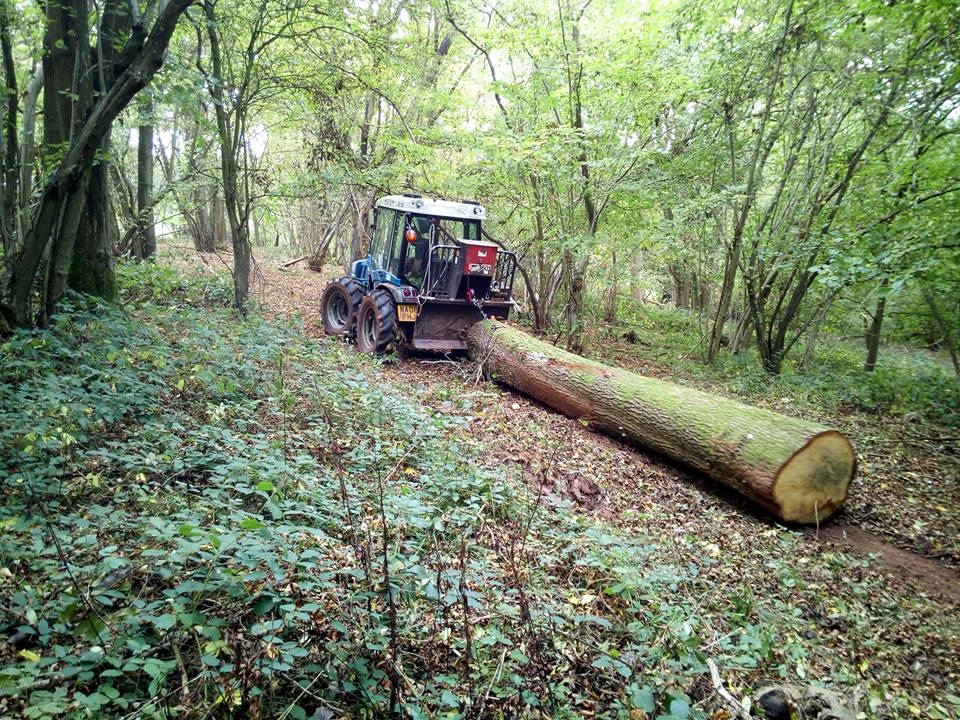Tree Surgery
Felling
Put simply cutting from ground level. Although often thought of as an easy task, the risks and complexity of felling even small trees should not be under estimated and once down, extreme stresses can be found in limbs waiting to catch out the unwary. At TrunkArb we are qualified and experienced in felling trees and trained to undertake pre felling assessments to ensure we get the tree on the ground where it’s required in a safe manner. Further to this being equipped with powerful winches we can undertake large assisted fells and our methodical approach to work will guarantee a smooth, efficient and safe crown breakdown.
Dismantling
Should a tree need to be removed but felling is impossible owing to the structure of the tree, or more likely its location, we can dismantle it in place using specialist climbing and rigging equipment. We are qualified and experienced in lowering down limbs and trunks of trees, in confined areas and over objects that must be protected. The process is started with a detailed study of the tree and some considered planning. Once a plan has been agreed and the team briefed, a rigging point is located high in the tree and, if required, craning points established around the crown (occasionally a second tree may be used for rigging points). This allows branches to be lowered under control to a dedicated ‘drop zone’, leaving you safe in the knowledge that your property will be safe under our working area.
Crown Reduction and Re-Shaping
As the name suggests a crown reduction involves the reduction of the height and spread of the tree’s canopy by a specified amount. This is a technical and complex operation that if not done properly can cause the tree significant damage as well as leaving it looking unsightly. Crown reduction can be undertaken for a variety of reasons such as the tree growing too big for its location or in attempt to combat an ailment. The most common reason for reducing the size of a tree’s canopy is to increase the light that enters a garden, while also ensuring a tree doesn’t out grow its location or reduce the threat of storm damage. Generally a crown should not be reduced by more than 30%; an even and natural shape should be maintained by pruning the outer branches, ensuring enough leaf area is maintained for the tree to continue to thrive. In crown re-shaping, the height and/or spread of one or more portions of the crown are selectively reduced, while not necessarily reducing the height and spread of the tree as a whole.
Crown Lifting
Crown lifting involves removing the lower branches to uniformly increase the clearance from the ground. This is normally done to increase the light penetration into gardens or to improve access under the tree, or clearance over structures. Normally the removal of large branches is to be avoided to prevent causing large injuries that may allow pathogens to establish themselves in the wound. A crown lift shouldn’t exceed 15% of the crown. Crown lifting in gardens will allow easy access under the canopy to gain access with mowers, or just to claim back some area, a crown lift will also reduce the shaded area caused by the canopy.
Crown Thinning
Removes some of the canopy without actually reducing the size or shape of the tree. This allows more light to filter through the canopy. It also may be undertaken to reduce the impact of strong winds and hence the chance of storm damage. Crown thinning involves removing branches throughout the crown, but not more than 30%. Crown thinning can encourage new growth and help to rejuvenate older trees, as well as allowing more light into normally shaded areas underneath the tree.
Pollarding
Pollarding is a pruning system applied on broad-leafed trees, where by the branches are regularly (perhaps every 3-5 years) removed to the main trunk. The advantages are that the size of the tree is controlled and the new growth is normally dense and bushy. Traditionally this was done to produce firewood or animal feed. Although not advisable on many mature trees, each tree should be assessed for it suitability for pollarding. The advantage of pollarding is that the size of the tree can be controlled as it ages, rather than the tree becoming too large for the situation it is in.
Crown Cleaning
Cleaning the crown of a tree can involve a number of activities from removing dead branches if they represent a risk, removing troublesome crossing branches, cutting out dead wood to clearing squirrel drays. There are many benefits from crown cleaning the most important being the removal of potentially dangerous branches. Crown cleaning, allows more light through the crown and reduces the likely access methods for diseases, in short it will improve the health of your trees!
Leylandii Hedge Reduction
Leylandii Hedges need regular maintenance to ensure the look their best and that they do not get out of hand. Being a robust tree Leylandii can be reduced in height significantly without preventing it from growing.
Need Tree Surgery?
If you have an old, diseased or damaged tree, you might be unsure how to deal with it. We are happy to give you a free quote and advice so please
